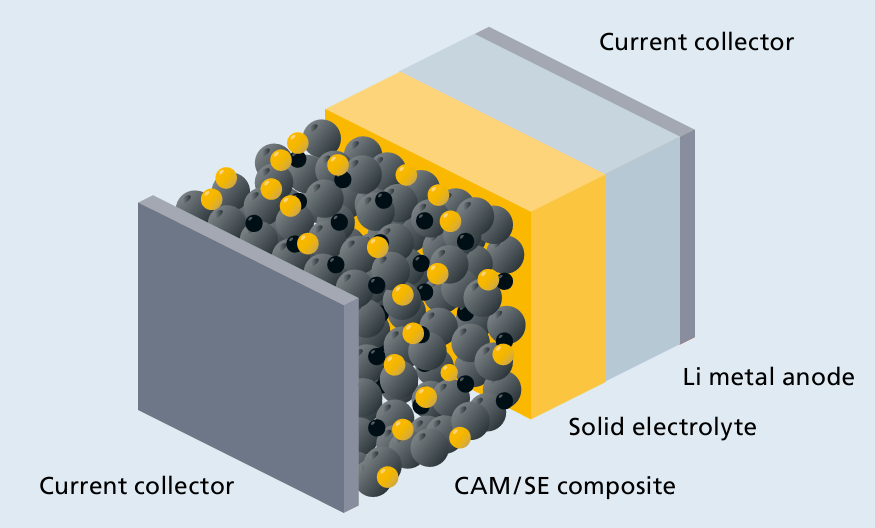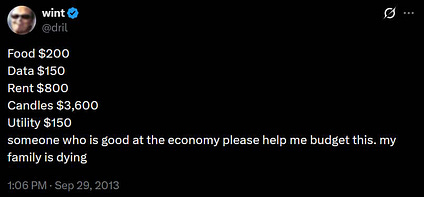Experts issue warning on financial crisis looming over millions of people: ‘We are running out of time’ – The Cool Down

Report on the Climate Finance Crisis in Small Island Developing States and Implications for Sustainable Development Goals
1.0 Introduction and Executive Summary
A report by the Global Center on Adaptation (GCA) reveals a critical financial crisis confronting the 39 nations classified as Small Island Developing States (SIDS). These nations face an annual climate adaptation funding deficit of approximately $10 billion, a shortfall that severely compromises their ability to achieve the Sustainable Development Goals (SDGs), particularly SDG 13 (Climate Action). Despite contributing less than 1% to global greenhouse gas emissions, SIDS are disproportionately affected by climate change, threatening their economic stability, food security, and very existence. This report analyzes the financial gap, its impact on key SDGs, and the urgent need for reformed global financial partnerships.
2.0 The Vulnerability of SIDS and Direct SDG Impacts
2.1 Profile of Small Island Developing States
SIDS represent a unique group of nations whose vulnerabilities are intrinsically linked to their geography and economic structures, directly impacting their progress on the SDGs.
- Demographics: The 39 SIDS are home to approximately 65 million people.
- Geography: Characterized as “large ocean states,” their exclusive economic zones in the ocean are, on average, 28 times larger than their landmass.
- Economic Dependence: Economies are heavily reliant on ocean-based sectors such as tourism and fisheries, making them highly susceptible to climate impacts on marine ecosystems, which directly relates to SDG 14 (Life Below Water) and SDG 8 (Decent Work and Economic Growth).
2.2 Disproportionate Climate Impacts and Setbacks to the 2030 Agenda
The climate crisis presents an immediate and existential threat to SIDS, undermining progress across the entire 2030 Agenda for Sustainable Development.
- SDG 13 (Climate Action): SIDS are on the front lines of climate change, experiencing severe impacts such as rising sea levels and extreme weather events. The sinking of atoll islands and accelerated flood risk in regions like Hawaiʻi are tangible evidence of this threat.
- SDG 1 (No Poverty) & SDG 2 (Zero Hunger): As stated by H.E. Hilda Heine, President of the Republic of the Marshall Islands, SIDS face imminent threats to food and water security, which jeopardizes fundamental goals related to poverty eradication and hunger.
- SDG 10 (Reduced Inequalities): A profound inequality exists wherein SIDS bear the most severe consequences of climate change while being the least responsible for its causes.
- SDG 11 (Sustainable Cities and Communities): The physical integrity of communities is at risk, with rising seas threatening to make low-lying areas uninhabitable.
3.0 Analysis of the Climate Adaptation Finance Gap
3.1 Financial Requirements Versus Current Allocations
The disparity between the financial needs of SIDS for climate adaptation and the funds they receive is stark, highlighting a failure in global climate finance mechanisms and a barrier to achieving SDG 17 (Partnerships for the Goals).
- Annual Need: SIDS require an estimated $12 billion per year for effective climate adaptation measures.
- Annual Receipt: Current climate finance flows to SIDS amount to just over $2 billion, representing only 0.2% of total global climate finance.
- Projected Cost of Inaction: Without accelerated investment, SIDS could face cumulative economic damages of $476 billion by 2050.
3.2 Systemic Barriers and Debt Burden
The structure of the current international financial system creates significant obstacles for SIDS, compounding their economic challenges and hindering sustainable development.
- Access to Finance: President Heine noted that existing financial systems were not designed for SIDS, with lengthy processes and stringent rules preventing access to necessary support.
- Debt Accumulation: A significant portion (44%) of the adaptation funding SIDS receive is in the form of loans, increasing their debt burden and undermining their capacity to invest in other critical SDGs.
4.0 Conclusion and Recommendations for SDG Achievement
4.1 The Investment Case for Adaptation and Global Partnership
Addressing the finance gap is not merely aid but a strategic investment in global resilience and the achievement of the SDGs. Professor Patrick V. Verkooijen, CEO of the GCA, emphasizes that “Adaptation is the best value proposition in climate action today.”
- Strengthen Global Partnerships (SDG 17): International partners must reform financial mechanisms to provide direct, grant-based, and accessible funding for SIDS to meet their adaptation needs.
- Invest in Resilience for High Returns: The GCA report notes that every dollar invested in climate resilience can yield up to $6.50 in avoided damages and co-benefits.
- Uphold Climate Justice (SDG 13 & SDG 10): Fulfilling financial commitments to SIDS is a matter of climate justice and a critical step toward reducing global inequalities and ensuring no nation is left behind in the pursuit of sustainable development.
1. SDGs Addressed in the Article
SDG 13: Climate Action
- The article’s central theme is the impact of climate change on Small Island Developing States (SIDS). It explicitly mentions the need for SIDS to “adapt to climate impacts” such as “rising seas, threats to food and water security.” This directly aligns with the goal of taking urgent action to combat climate change and its impacts.
SDG 14: Life Below Water
- The article describes SIDS as “large ocean states” whose “entire economies, from tourism to fisheries, often depend on the ocean.” It also highlights the threat to marine ecosystems, noting that “low-lying atoll islands are losing their very ability to build themselves up against rising seas as coral reefs decline.” This connects to the goal of conserving and sustainably using the oceans, seas, and marine resources.
SDG 11: Sustainable Cities and Communities
- The article discusses direct threats to human settlements, citing a study that found “parts of Hawaiʻi are sinking, drastically speeding up local flood risk and cutting disaster preparedness timelines in half.” The need for finance is to protect these communities from climate-related disasters, which relates to making cities and human settlements inclusive, safe, resilient, and sustainable.
SDG 17: Partnerships for the Goals
- A primary focus of the article is the financial disparity and the failure of the global financial system to support SIDS. It highlights the need for “$12 billion a year” versus the “$2 billion” received, the problem of funding arriving as “debt,” and barriers like “long processes and strict rules.” This directly addresses the need for global partnerships for sustainable development, particularly in the area of finance.
2. Specific Targets Identified
-
SDG 13: Climate Action
- Target 13.1: Strengthen resilience and adaptive capacity to climate-related hazards and natural disasters in all countries. The article is fundamentally about the need for SIDS to adapt to climate impacts like rising seas and increased flood risk. The entire call for $12 billion in annual funding is for adaptation measures to build resilience.
- Target 13.a: Implement the commitment undertaken by developed-country parties… to a goal of mobilizing jointly $100 billion annually… to address the needs of developing countries. The article’s core argument is the failure to meet the financial needs of SIDS, which are receiving “only a fraction” of the required climate finance.
-
SDG 14: Life Below Water
- Target 14.2: By 2020, sustainably manage and protect marine and coastal ecosystems to avoid significant adverse impacts, including by strengthening their resilience. The mention of “coral reefs decline” directly relates to the health and resilience of coastal ecosystems that protect islands.
- Target 14.7: By 2030, increase the economic benefits to Small Island developing States… from the sustainable use of marine resources, including through sustainable management of fisheries… and tourism. The article establishes that SIDS’ economies, including “tourism to fisheries,” are dependent on the ocean and threatened by climate change.
-
SDG 11: Sustainable Cities and Communities
- Target 11.5: By 2030, significantly reduce… the direct economic losses… caused by disasters, including water-related disasters, with a focus on protecting… people in vulnerable situations. The article quantifies the potential economic losses, stating that “SIDS could face cumulative damages of $476 billion by 2050” if action is not accelerated.
-
SDG 17: Partnerships for the Goals
- Target 17.3: Mobilize additional financial resources for developing countries from multiple sources. The article explicitly calls for mobilizing finance, contrasting the “$12 billion” needed with the “$2 billion” received.
- Target 17.4: Assist developing countries in attaining long-term debt sustainability… and address the external debt of highly indebted poor countries to reduce debt distress. The article points out that “44% of the adaptation funding they do get arrives as debt, piling onto already strained economies,” which directly relates to the issue of debt sustainability.
3. Indicators Mentioned or Implied
-
Financial Flow Indicators
- The article provides specific figures that can be used as indicators to measure financial flows for climate adaptation. These include the $12 billion needed annually, the $2 billion currently received, and the fact that this represents only 0.2% of global climate finance. These numbers directly measure progress (or lack thereof) towards Target 13.a and 17.3.
-
Debt Burden Indicator
- The statement that “44% of the adaptation funding they do get arrives as debt” serves as a direct indicator for measuring progress towards Target 17.4. A reduction in this percentage would indicate progress in providing sustainable financing.
-
Economic Loss Indicator
- The projection that “SIDS could face cumulative damages of $476 billion by 2050” is an indicator of the potential economic losses from climate-related disasters, relevant to Target 11.5.
-
Investment Return Indicator
- The article implies an indicator for measuring the effectiveness of adaptation investment by stating that “every dollar invested in resilience can yield up to $6.50 in avoided damages.” This provides a metric for evaluating the value and impact of adaptation projects.
4. Summary Table of SDGs, Targets, and Indicators
| SDGs | Targets | Indicators |
|---|---|---|
| SDG 13: Climate Action |
13.1: Strengthen resilience and adaptive capacity to climate-related hazards.
13.a: Mobilize climate finance for developing countries. |
– Annual climate adaptation finance needed: $12 billion. – Annual climate adaptation finance received: $2 billion. – Return on investment in resilience: up to $6.50 in avoided damages per $1 invested. |
| SDG 14: Life Below Water |
14.2: Protect and restore marine and coastal ecosystems.
14.7: Increase economic benefits for SIDS from marine resources. |
– (Implied) Health of coral reefs. – (Implied) Economic stability of ocean-dependent sectors like tourism and fisheries. |
| SDG 11: Sustainable Cities and Communities | 11.5: Reduce economic losses from disasters. | – Projected cumulative damages by 2050 without action: $476 billion. |
| SDG 17: Partnerships for the Goals |
17.3: Mobilize additional financial resources for developing countries.
17.4: Assist developing countries in attaining long-term debt sustainability. |
– SIDS’ share of global climate finance: 0.2%. – Percentage of adaptation funding provided as debt: 44%. |
Source: thecooldown.com
What is Your Reaction?
 Like
0
Like
0
 Dislike
0
Dislike
0
 Love
0
Love
0
 Funny
0
Funny
0
 Angry
0
Angry
0
 Sad
0
Sad
0
 Wow
0
Wow
0


















































.jpg.webp?itok=0ZsAnae9#)





/environment-climate-change-and-health-(ech)/water-sanitation-hygiene-and-health-(wsh)/landfill-tuvalu-36092.tmb-1200v.jpg?sfvrsn=5c21fe40_1#)



















